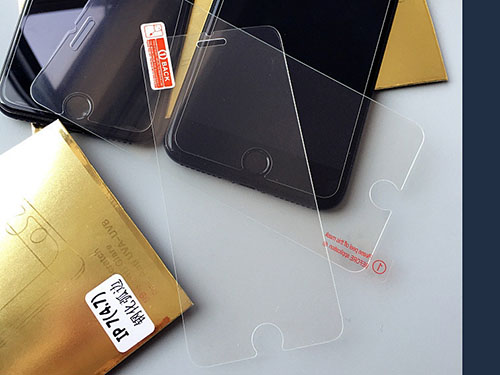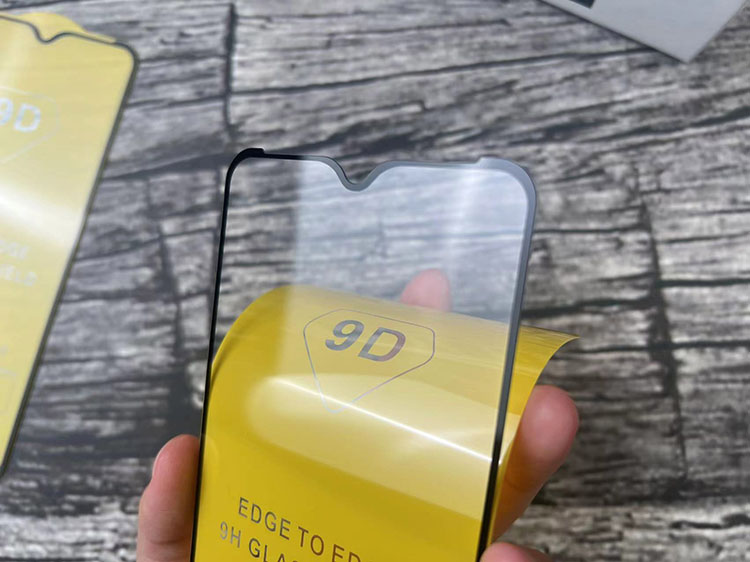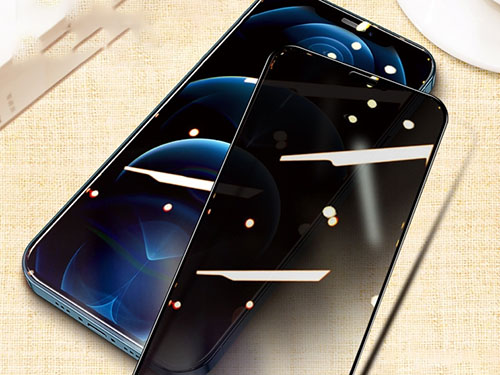28
2022-12
An article takes you to know about mobile phone screen protector
An article takes you to know about mobile phone screen protector
Compared with ordinary screen protectors (that is, non-full/non-full coverage phone screen protectors), full-screen screen protectors have more secondary strengthening. The second-strength process can further increase the strength of tempered glass, but of course the price is more expensive.

③Thickness
The thinner the natural thickness, the better the experience. The optimal screen protector thickness can be between 0.2mm-0.3mm.
0.3mm is the mainstream thickness in the market at present. Ten or so pieces are basically this thickness or even thicker. As for the transparent feel, there is no need for any other requirements, and there is no problem with sticking it on.
0.2mm is the mainstream thickness of the mid-range phone screen protector at present, with excellent permeability and hand feeling, and the price is slightly expensive.
0.15mm is the thinnest technology at present, and it is not bad for those who pursue the ultimate transparency and feel. It is only for wealthy local tyrants. If it is cracked, just replace it with a new one.
④Hardness
The hardness of ordinary glass will not exceed 7, and the Mohs hardness of Apple's original Gorilla screen is only between 6-7.
The 7H and 9H used in the marketing copy are actually the hardness standards of pencils. The Mohs hardness corresponding to the 9H pencil is about 5, and the Mohs hardness of tempered glass is generally 6-7, so the hardness of the screen protector is "9H". Very reasonable and normal.
⑤phone screen protector edge
Flat phone screen protector (0D)
The edge is not cut, it is a right angle, this kind of membrane is the cheapest, but the biggest disadvantage is the diaphragm, which is basically invisible now.
Curved edge glass (2.5D)
This kind of phone screen protector is an upgrade of the flat phone screen protector, that is, the edge of the non-fitting side is chamfered to make the angle into a circular arc, which can greatly enhance the hand feeling. This kind of phone screen protector is obviously enough in the era of iphone4-5. Because at that time the mobile phone screen was purely flat. But there is one thing to note, some membranes are not handled well, and there are still right angles near the button and the earpiece, and these positions are still diaphragmatic.

Curved edge glass (3D)
This kind of phone screen protector is mainly aimed at the application scene where the edge of the mobile phone screen is curved after iphone6. By processing the edge position of the screen protector, a shape that can fit the edge of the curved screen of the mobile phone is obtained to solve the problem of white edges and fit.
It should be noted that many mobile phone screen protectors on the market that promote 9D and 10D do not necessarily have curved edges, but are just ordinary 2.5D. But even if it is a real 3D curved phone screen protector, due to the influence of the AB adhesive base material, the curved edge cannot be completely bonded, so it will be made into a black edge to avoid visual defects. However, the gap of the 3D phone screen protector is really smaller than that of the 2.5D phone screen protector.
⑥ Production process
Cold carving process:
The cold engraving process is to directly hollow out the middle of the glass with a CNC engraving machine, and form a radian on the outside. Compared with the hot bending process, the price of cold engraving is higher. The quality is relatively high.
Hot bending process:
The material used for hot bending molds is graphite. The molds for Samsung products are two-piece molds, and the hot bending molds for Apple products are four-piece molds. The flatness of the middle plane part of the product made by the four-piece molds will be higher than that of the two-piece molds.
The hot bending screen protector is essentially a flat glass phone screen protector processed by a hot bending machine at high temperature into a glass with a curved surface, not like a 2.5D glass phone screen protector, only the edges are curved, and the screen itself is flat. The screen itself of the 3D thermal bending screen protector is also curved, which has a good viewing effect and a much better hand feel. So the hot curved screen protector can also be called 3D curved surface/glass/hot curved/full screen screen protector, the same curved surface is also a description of shape like 3D.
Epoxy process:
Glue dispensing process (glue dispensing process) is also called fake 3D. The reason is very simple. The edge of the 3D screen protector made of glue dispensing is not made of glass, but the method of dispensing glue is used to make the glass appear curved. Some vendors on the market take advantage of consumers' weak awareness of this 3D screen protector, and sell fake 3D as 3D tempered glass phone screen protector, but in fact, the cost of the glue-dropping process is not as high as that of the real 3D hot-curved screen protector. device height.
Advantages: low production capacity, cheap price, fast exhaust;
Disadvantages: hand scraping, poor three-dimensional effect;
Etching process:
The etching process refers to the use of chemicals to corrode the glass to make the glass show grooves, and then go to the CNC engraving machine for fine carving. The etching process used is generally customized according to customer needs.

Process summary:
There are relatively more 2.5D and 3D hot-bending screen protectors on the market. The production efficiency of hot-bending is the first among the four kinds of technology, and it can make a large arc. For example, Samsung mobile phones can only use hot-bending at present.
Four comparisons:
The production efficiency of cold carving is low, and the quality and price refer to the strength of the company;
High bending efficiency, low stability, easy to have white edges when pasted with AB glue;
The dispensing appearance is slightly worse, but the exhaust is faster among the four;
Etching will have etching lines, the exhaust is better than cold engraving, and the output is also higher than cold engraving.
Contact With Us
If you are willing to cooperate with us, you can contact us by leaving a message below.We will contact you as soon as we receive the information!
Contact information
sales04@weaddu.com
Phone number
+8619902626141
Tel
+86-0769-22820683
Address
Building 1, No. 20, Caotang Road, Gedi Community, Nancheng District, Dongguan City, Guangdong Province, China
